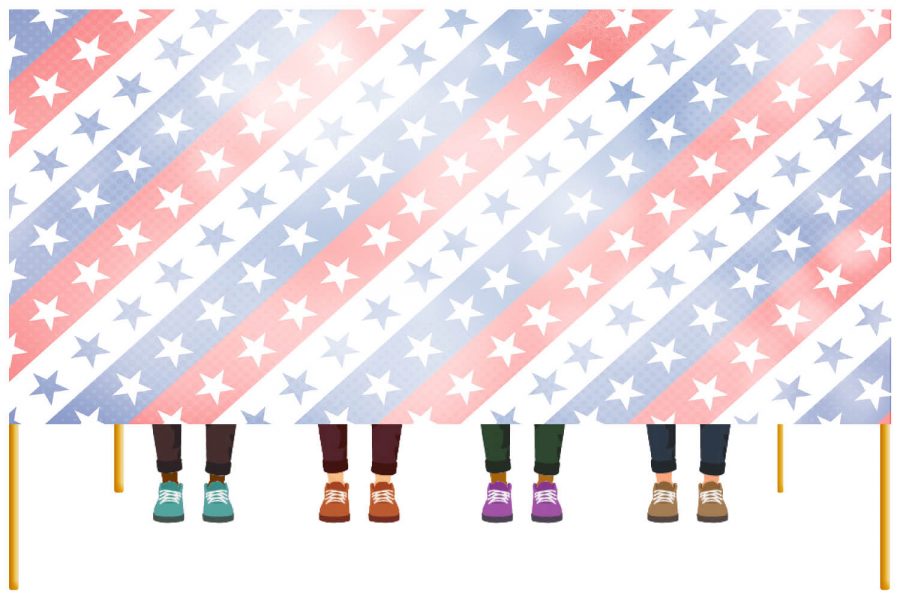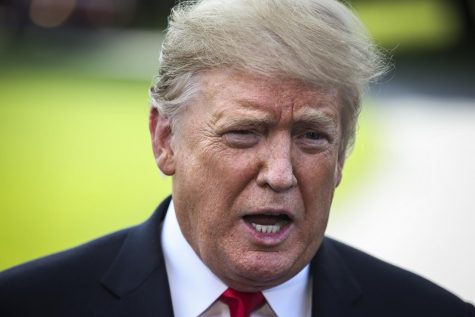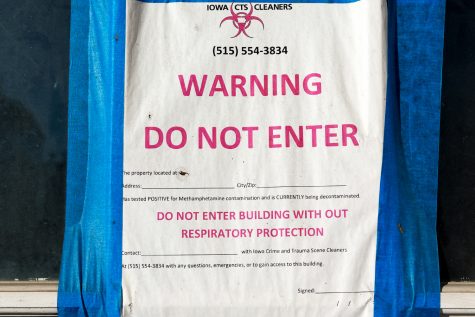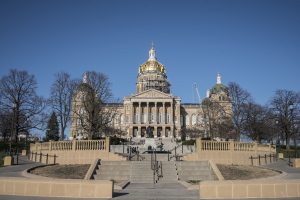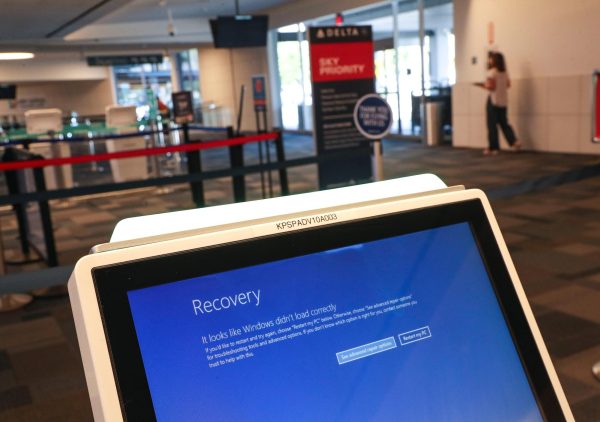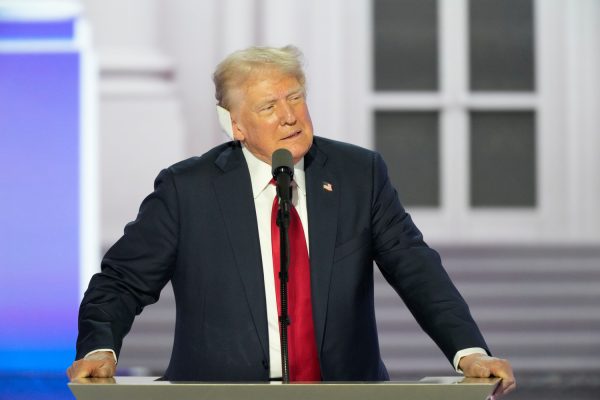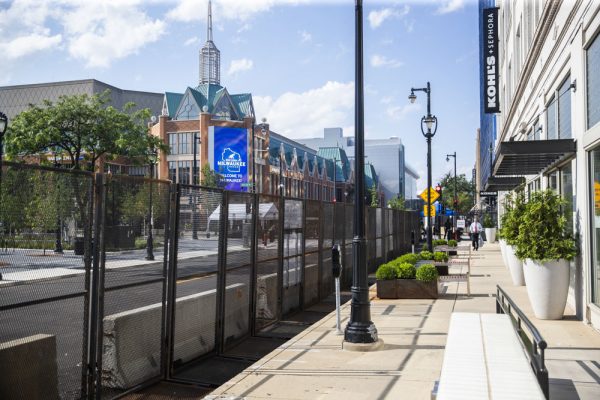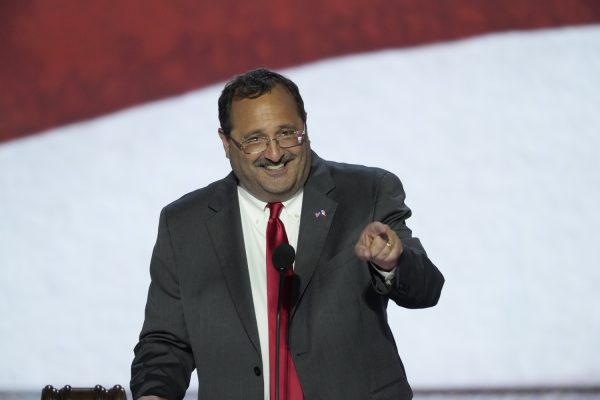Efforts to attract the youth vote continue as Election Day approaches
Ongoing efforts statewide hope to bring a historic turnout rate of young voters to the polls for the November midterm elections.
October 9, 2018
In an effort to draw a historic turnout of young voters to the polls in the 2018 midterm elections, groups around the state are surging to college campuses in Iowa to register and engage students.
Iowa’s largest voting bloc — 18- to 35-year-olds — has historically had the lowest voter turnout rate in the state. But with all of Iowa’s executive officer positions, all four of the state’s seats in the U. S. House of Representatives, half of the seats in the Iowa Senate, and all 100 seats in the Iowa House of Representatives up for election, groups are eyeing the impact the youth vote could have if they turnout.
A higher youth turnout for either party could sway the outcome in at least two Iowa races, including the gubernatorial race between Gov. Kim Reynolds, a Republican, and Democratic candidate Fred Hubbell and Iowa’s 1st Congressional District race between Republican incumbent Rod Blum and Democratic challenger Abby Finkenauer, according to a nonpartisan analysis group, Tufts University’s Center for Information and Research on Civic Learning & Engagement.
Many say if young voters turn out to the polls this year, Iowa politicians may focus more on the interests of young Iowans while in office and on the campaign trail. The question remains whether efforts by political engagement organizations will be enough to draw young voters to the polls come Nov. 6.
Historically low turnout rates
Registered voters between the ages of 18 and 35 compose 28.3 percent of Iowa’s nearly 2 million registered voters, making them the largest voting bloc in the state. However, in 2016, Iowans ages 18- to 34-years-old had the lowest voter turnout rate compared with other age cohorts in the state.
Nineteen-year-old Abbey Wilson, a University of Iowa sophomore, said she will cast her vote because she supports a woman’s right to choose to have an abortion and gun control. Wilson registered to vote at a NextGen America event, though she said she is still undecided on the candidates.
If [millennials are] less likely to vote already and then you have campaigns targeting older voters on top of that, it’s sort of this reinforcing loop where it’s just hard to get [Millennials] out to vote.
— University of Northern Iowa Political Science Professor Christopher Larimer
“I don’t like standing back and just watching everything that’s happening,” Wilson said. “In order to say something, you have to be involved, you have to take a stand.”
UI senior McKenzie Musser, another undecided voter, updated her address at a voter-registration table so she could vote in the upcoming elections. Musser voted in 2016 and wants to make her voice heard again on the issues that matter to her, including affordable health care and gun control, this November.
RELATED: Voter ID law seen as unnecessary by some Iowa county auditors
“For me, it’s a lot about being able to express your opinion,” Musser said. “I had a couple friends who didn’t vote in the last presidential election, and they’re like ‘Oh, I hate this,’ and I’m like ‘OK, why didn’t you vote then? Your opinion would have counted, and we might not be in this situation if you had done so.’ ”
With previously low turnout in mind, groups around the state are working to engage young voters in time for the upcoming election.
But sustaining youth interest in nonpresidential years remains difficult, said University of Northern Iowa political science Professor Christopher Larimer, whose research includes voter turnout and Iowa politics.
He said campaigns are more likely to target older voters with a more reliable voting record.
“Part of turning out to vote is simply being contacted,” Larimer said. “If [millennials are] less likely to vote already and then you have campaigns targeting older voters on top of that, it’s sort of this reinforcing loop where it’s just hard to get [millennials] out to vote.”
But because young voters are the largest voting bloc in Iowa, Iowa politicians may begin to deviate from issues they’ve focused on for decades, said David Andersen, an assistant professor of political science at Iowa State University.
“[Politicians are] going to have to start talking about what millennials want and what problems millennials are facing. That is a very different conversation than what we’ve had before,” Andersen said.
In a neck and neck race for governor, the two major-party candidates’ campaigns said they are working to engage young voters as the future of Iowa.
Hubbell said in an email statement to The Daily Iowan that he and his running mate, state Sen. Rita Hart, D-Wheatland, are committed to reaching as many voters as possible across Iowa.
“We are at a tipping point as a state, and it’s important for us to invest in our future so Iowa continues to be a great place for generations to come. Young people have the power to swing elections, and nearly 57 percent of newly registered voters in Iowa are under the age of 30,” Hubbell said in his statement, referring to a NextGen Rising report. “Rita and I look forward to listening to and working with millennials — and all Iowans — through Election Day and beyond.”
RELATED: Nextgen America founder visits UI to engage youth voters
Reynolds’ campaign spokesman Pat Garrett said in an email statement to The Daily Iowan that Reynolds’ policies on secondary training are engaging young voters.
“They are our state’s future and it’s why one of her biggest priorities and passions is to help Iowans find that dream job or career right here in the state,” Garrett said in his statement. “Gov. Reynolds’ focus on job-training, apprenticeships, internships, and scholarships is helping her campaign earn support from young people across Iowa.”
Engaging Iowa’s youth vote
Organizers of all parties hoping to engage the youth vote have tabled on campuses across the state. Armed with clipboards, a stack of voter registration forms, witty social-media posts, and free treats, they hope to engage students in the election process.
Voting is the one action that every single citizen can take to truly have a say in the policy decisions that impact our daily lives.
— UI Student Government Governmental Relations Committee Chair Jocelyn Roof
“Young people are the largest voting bloc in America and also in Iowa. If we all vote, we get candidates elected who are going to stand up for issues that we care about,” NextGen’s Iowa Director Haley Hager said.
NextGen America, a liberal advocacy group, is active on 41 Iowa college campuses and reported it had registered 12,000 people across the state since March. Hager said the group has worked to engage young voters on issues that matter to them in order to motivate them to vote.
“Having those critical face to face conversations is one of the most persuasive ways we believe in getting young people out to vote,” Hager said.
Similar to NextGen’s approach of engaging young voters on issues, UI Student Government Governmental Relations Committee Chair Jocelyn Roof said young voters should consider the ways policy decisions made in Des Moines affect their values.
“Voting is the one action that every single citizen can take to truly have a say in the policy decisions that impact our daily lives,” Roof said. “If you care about the environment, vote. If you care about health care, vote. The economy, farmers, education, vote.”
UISG, a nonpartisan group, has registered slightly more than 2,000 people since mid-August. UISG has paired with other organizations, including the Campus Election Engagement Project, to engage the youth vote, and Roof said that collaboration is why she thinks this year’s turnout for the elections will be so successful.
As November approaches, groups are focusing their efforts on getting registered voters to turn out to the polls.
One nonpartisan group working with 20 schools in Iowa, the Campus Election Engagement Project, has prioritized educating young voters about how to vote and emphasizing their vote matters to encourage new registrants to then turn out at the polls.
“Young people as a whole tend to be the age group with the lowest voting rate, which means their voice just isn’t being heard,” said Samantha Bayne, Iowa’s director for the project said. “… Voting is one of the most central parts of our democracy and we have to show that our voice matters, and that means going to the polls on Election Day.”
To encourage turnout, UI College Republicans are promoting voting by absentee ballot.

Students learn about the voting process on the T. Anne Cleary Walkway on Tuesday, September 26, 2017. UISG hosted tables where students could register to vote. (Shivansh Ahuja/The Daily Iowan)
“That way there is no excuse for, ‘I forgot,’ or, ‘I had class’ on Election Day. If you vote absentee, there is no excuse,” Chairman of UI College Republicans Kyle Apple said. “We’re really stressing that to students and letting them know that this [is] probably the best and easiest way you’ll ever have a chance to make your voice heard at the state and national level.”
The organization stresses the importance of being registered to vote, specifically in Johnson County.
“… It’s great if you’re already registered to vote but if you’re not registered to vote here, you’re diluting your voice here on campus,” Apple said.
RELATED: UISG, GPSG hopes to increase student voter turnout through voter registration week
Will this year’s turnout be historic?
As Nov. 6 approaches and efforts to engage the youth vote continue, many are left waiting in anticipation of what will happen in the midterm elections.
Roof is hopeful the combined efforts of organizations will result in record turnout and prove that young voters are neither apathetic or lazy.
“I just want our campus to turn out in mass and to prove that young people care, and they don’t just care in presidential elections, but they care in the midterms,” Roof said.
Andersen, the Iowa State professor, said he feels that young people are engaged now, but that doesn’t necessarily mean they will turn out and vote in November.
“2018 could be the touchstone year where millennials turn out to vote and become the dominant generation,” Andersen said. “Or they could stay home again like they did in 2016, in which we’ll have this conversation again in 2020 ahead of the presidential election.”
Until Election Day arrives and the votes are tallied, groups will just have to wait and see.



